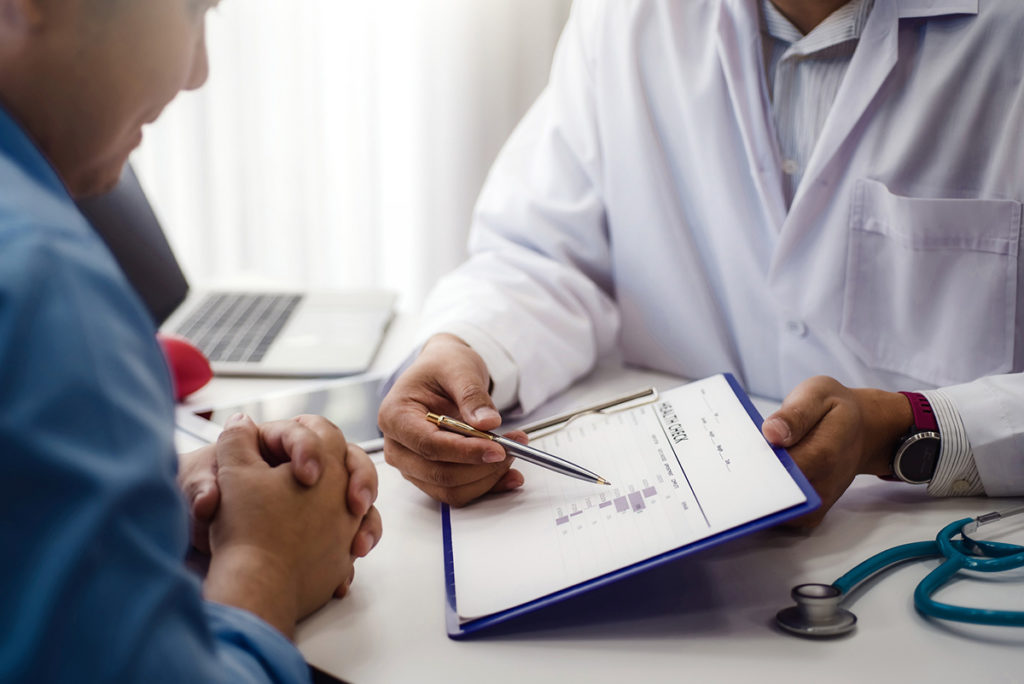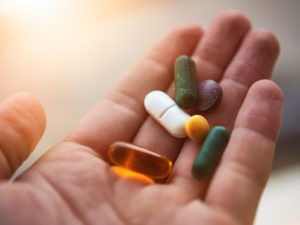
Diagnosed with Cancer? Your two greatest challenges are understanding cancer and understanding possible side effects from chemo and radiation. Knowledge is Power!
Learn about conventional, complementary, and integrative therapies.
Dealing with treatment side effects? Learn about evidence-based therapies to alleviate your symptoms.
Click the orange button to the right to learn more.
Unreported Side Effects in Clinical Trials?

Who decides what are unreported side effects in clinical trails? Oncologists overseeing the trial? Patients who volunteered for the trial? Do you think cancer patients in clinical trials ever take a stoic approach and downplay side effects aka adverse events?
My point is that all types of adverse events aka side effects occur and go unreported and are therefore not communicated to the newly diagnosed cancer patient.
Please be aware of this fact if you are a cancer patient relying on the input of one or more clinical trials.
Do adverse events ever go unreported in cancer clinical trials?
- Underreporting: Researchers may sometimes fail to report adverse events due to oversight, negligence, or misinterpretation of reporting guidelines.
- Misclassification: Adverse events may be misclassified or attributed to other causes, leading to their omission from trial reports.
- Patient Non-disclosure: Patients may not always disclose adverse events they experience during the trial, particularly if they perceive them as minor or unrelated to the treatment.
- Bias: There can be a bias toward reporting only the most severe or clinically relevant adverse events, leading to underreporting of less significant events.
- Resource Constraints: Limited resources or time constraints may prevent thorough monitoring and reporting of adverse events, especially in large-scale trials.
- Publication Bias: There may be a tendency to report trials with positive outcomes more prominently, potentially leading to underreporting of adverse events in less favorable trials.
Understanding that unreported side effects in clinical trials are a problem and understanding that long-term and late stage side effects are also a problem, what is a newly diagnosed cancer patient supposed to do?
In my experience as a cancer survivor, there are a host of evidence-based but non-conventional therapies shown to reduce or prevent short, long-term and late stage side effects.
Let me defend conventional oncology for a moment. I believe that oncology views its purpose as saving the life of the newly diagnosed cancer patient. If the newly diagnosed cancer patient presents with early stage cancer such as breast, prostate, colorectal, etc. a cure or complete remission can be achieved through surgery and/or low dose chemo or radiation.
If the newly diagnosed cancer patient presents with advanced cancer then oncology will deploy aggressive therapies in an effort to reach remission and stabilize the patient. Unfortunately, the advanced cancer patient stands a good chance of relapse but I believe that oncology focuses on the short term “five year” average life expectancy.
My point in explaining the above, is that grade 1,2 and 3 adverse events are, to the oncologist, nothing more than a distraction… a nuisance. Grade 1,2 and 3 side effects don’t cause death to the average cancer patient so I think oncology ignores them.
Back to evidence-based non-conventional therapies shown to reduce the toxicity of conventional therapies and therefore reduce or eliminate short, long-term and late stage side effects.
What are some non-conventional therapies shown to reduce the toxicity of conventional cancer therapies?
- Acupuncture: Some studies suggest that acupuncture may help manage the side effects of cancer treatment such as nausea, vomiting, fatigue, and pain. It’s often used alongside conventional therapies to improve quality of life.
- Mind-body techniques: Practices such as meditation, yoga, and mindfulness-based stress reduction have been shown to reduce anxiety, depression, and stress in cancer patients. These techniques may also help alleviate some treatment-related side effects and improve overall well-being.
- Herbal supplements and botanicals: Certain herbs and plant-based supplements have been studied for their potential to reduce chemotherapy-induced side effects. For example, ginger has been shown to alleviate chemotherapy-induced nausea, while milk thistle may help protect the liver from damage caused by chemotherapy drugs.
- Massage therapy: Massage therapy can help reduce pain, anxiety, and fatigue in cancer patients. It may also improve circulation and lymphatic drainage, potentially aiding in the removal of toxins from the body.
- Nutritional therapies: Some dietary supplements and changes in diet may help mitigate the side effects of cancer treatment and improve treatment outcomes. For example, antioxidants like vitamin C and E may help protect healthy cells from damage caused by chemotherapy and radiation therapy.
- Exercise: Regular physical activity has been shown to improve overall quality of life in cancer patients and survivors. It can help reduce fatigue, improve mood, and enhance physical function during and after cancer treatment.
Are you a cancer patient struggling with short, long-term and/or late stage side effects ? Or perhaps you are a cancer patient relying on clinical trial data and you are angered to learn that there are unreported side effects in clinical trails?
Email me if you would like to learn more about evidence-based non-conventional therapies shown to reduce the toxicity of chemotherapy and radiation. Email me at David.PeopleBeatingCancer@gmail.com
Hang in there,
David Emerson
- Cancer Survivor
- Cancer Coach
- Director PeopleBeatingCancer
Importance of Low- and Moderate-Grade Adverse Events in Patients’ Treatment Experience and Treatment Discontinuation: An Analysis of the E1912 Trial
“Purpose- Despite defined grades of 1 to 5 for adverse events (AEs) on the basis of Common Terminology Criteria for Adverse Events criteria, mild (G1) and moderate (G2) AEs are often not reported in phase III trials. This under-reporting may inhibit our ability to understand patient toxicity burden. We analyze the relationship between the grades of AEs experienced with patient side-effect bother and treatment discontinuation.
The Likert response Functional Assessment of Cancer Therapy-GP5 item, “I am bothered by side effects of treatment” was used to define side-effect bother. Bayesian mixed models were used to assess the impact of G1 and G2 AE counts on patient side-effect bother and treatment discontinuation. AEs were further analyzed on the basis of symptomatology (symptomatic or asymptomatic). The results are given as odds ratios (ORs) and 95% credible interval (CrI)…
Documentation of AEs in clinical trials has historically relied on provider reporting.
Despite five distinct grades of AEs, mild- and moderate-grade AEs (ie, grades 1 and 2) are under- or unreported, on the rationale that AEs of low and moderate grades are unlikely to affect patient safety or key trial end points.1
Nevertheless, while arguing that reducing monitoring for a low- or moderate-grade AE has no impact on patient safety, Mahoney et al1 simultaneously report that over 50% of routine AEs captured are of grade 2 or less…


